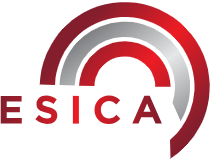The Wi-Mi project stands at the forefront of educational innovation, specifically designed to enhance environmental awareness among students and educators alike. This initiative, supported by funding from the European Union, incorporates a blend of practical resources and visual learning tools that aim to foster a deeper understanding of sustainability and the impact of human actions on the environment.
At the heart of the Wi-Mi project is the goal to equip learners with the knowledge and skills needed to make environmentally sound decisions. Through engaging educational materials and interactive tools, the project seeks to clarify complex environmental issues, such as climate change and resource conservation, in a manner that is both accessible and compelling. This approach not only informs students but also inspires them to become proactive stewards of the planet.
The Wi-Mi project emphasizes a multidisciplinary approach, integrating concepts from science, technology, engineering, arts, and mathematics (STEAM) to explore environmental challenges. This comprehensive framework encourages students to view environmental issues through various lenses, promoting a holistic understanding that is crucial for effective problem-solving. By linking STEAM subjects with environmental education, Wi-Mi prepares students to think critically and creatively about how they can contribute to sustainability efforts.
Another significant aspect of the Wi-Mi initiative is its focus on community engagement. The project advocates for collaboration among schools, local communities, and environmental organizations to expand its impact. These partnerships are vital for disseminating the project’s teachings beyond the classroom, embedding environmental consciousness into the broader community fabric.
The Wi-Mi project also utilizes advanced technology to bring environmental education to life. Through virtual reality (VR) simulations, students can experience firsthand the potential effects of environmental degradation and the benefits of sustainable practices. These immersive experiences are particularly effective at conveying the urgent nature of environmental issues and the tangible impact of individual and collective actions.
In conclusion, the Wi-Mi Practical Visual Tools project represents a significant advancement in environmental education. By blending innovative teaching methods with a strong emphasis on community and technology, the project not only educates but also empowers young people to lead the way in sustainability. As the project continues to grow, its influence is set to inspire a new generation of environmentally conscious individuals, equipped to face and address the ecological challenges of the future.






